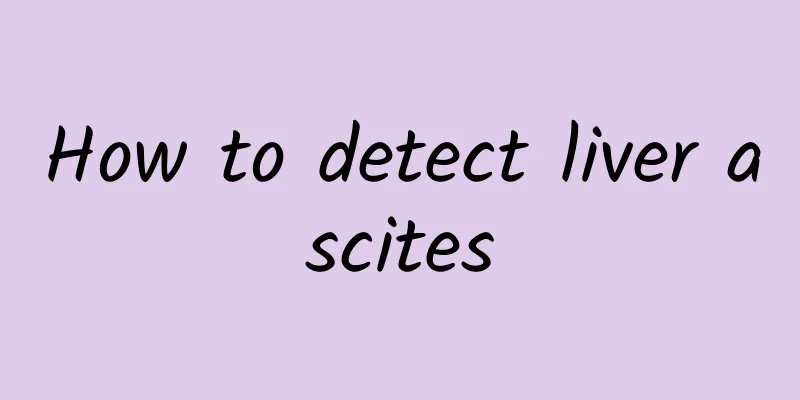Six fatal parts of men and women should not be touched

|
Human life is tenacious, yet fragile. In the face of accidental injuries, our flesh and blood bodies are often "vulnerable". So, which parts are the vital parts? Once we encounter an accident, how can we "save our lives"? The following experts will give us some tips and teach us how to protect the "vital parts of life". 1. Temple: This is the weakest part of the skull. The thinnest part of the bone plate is only 1-2 mm, and the middle cerebral artery is located below the temple. If a person is hit violently, it is easy for blood vessels to rupture and bleed heavily, causing intracranial hematoma and causing the person to fall into a coma. Surgery should be performed promptly after the injury, otherwise it may be fatal. Common injuries: traffic accidents, beatings, falls, smashes, collisions, etc. Protective measures: When an earthquake or stampede occurs, first protect your head and neck. Cover your temple with one hand, protect the cervical vertebrae from behind with the other hand, clamp your elbows forward to protect your face, and at the same time bend your body into a "baby shape" to provide a certain cushioning effect. This is also a posture that protects the rest of the head. 2. Back of the head: It contains the brain stem, the respiratory and heartbeat center. It is responsible for maintaining important physiological functions such as heartbeat, breathing, digestion, body temperature, and sleep. It can be said to be the "life center." The skull at the back of the head is relatively weak. If it is severely injured, it can cause fatal intracranial hematoma. Common injuries: car accident injuries, beating injuries, falling injuries, smashing injuries, falling injuries, etc. Protective measures: The brain is an extremely important organ in the human body. Lack of oxygen for 4 minutes can cause brain cell death. Therefore, when going out for a walk, activities, or fun, you should try to stay away from high-rise buildings and avoid walking or staying under steep cliffs to prevent being hit by falling objects or rolling stones. The protective posture is the same as the previous one. If you unfortunately suffer a head injury, you must go to the hospital as soon as possible for a head CT scan to rule out intracranial hematoma. Some patients with head trauma will wake up after a short coma, and then fall into a coma again. This may be a precursor to intracranial hemorrhage. Some head traumas do not have epidermal injuries, but they should not be taken lightly and should be treated promptly. Otherwise, once intracranial hemorrhage occurs, it will be too late to go to the hospital. 3. Cervical vertebra: This is the most vulnerable nerve center "corridor" in the human body. Once severely damaged, it can be fatal. According to statistics, the mortality rate of cervical spine injury complicated with spinal cord injury can reach 15%-20%. Especially high cervical fractures can easily cause respiratory and cardiac arrest. In addition, injury to the trachea can easily cause suffocation, and injury to the carotid artery next to the Adam's apple can easily lead to death due to excessive blood loss. Common injuries: car accident injuries, knife wounds, falls, sports injuries, etc. Activities such as single and double bars, skating, skateboarding, diving, and dancing are more likely to injure the cervical spine. Protective measures: Every summer, there are frequent accidents where swimmers hit their heads against obstacles while diving, causing cervical fractures. Therefore, you must not dive into waters where you are not familiar with the depth or in waters where diving is prohibited. Once an accidental injury to the cervical spine occurs, the patient should be laid flat on the ground, and the patient's head and neck should be kept as stable as possible. Do not let it swing, and do not massage it at will to prevent nerve damage. If breathing difficulties occur, the oral contents must be cleared immediately, the airway must be kept open, and artificial respiration must be performed. 4. Arteries of the limbs: The brachial artery in the upper arm and the femoral artery in the groin are both located in relatively superficial locations on the body. They are not only easily injured, but can also easily lead to death due to excessive bleeding. If the amount of bleeding exceeds 30% of the human body's blood volume, it can be life-threatening. Common injuries: car accident injuries, knife wounds, etc. Protective measures: If a large wound occurs, first press the pulsating point on the artery closer to the heart to quickly stop the bleeding, then quickly find a clean towel, handkerchief, gauze, etc. and press it hard on the wound. If the bleeding still does not stop, use a bandage, handkerchief, towel, etc. as a tourniquet to tighten the limb above the wound. Chen Zhi reminded that if the upper limbs are injured, the tourniquet can only be used on the upper 1/3 and lower 1/3 of the upper arm, and cannot be used to strangle the middle of the upper arm or the forearm; the tourniquet should not be used continuously for more than 1 hour, and should be loosened for 1-5 minutes every hour. 5. Heart: As the power of blood supply to the human body, the heart promotes blood flow and provides sufficient blood flow to organs and tissues. If penetrating trauma or violent blow occurs, it may cause massive bleeding or cardiac arrest, and the victim will die quickly. Common injuries: car accident injuries, gunshot wounds, knife wounds, martial arts, Sanda, etc. Protective measures: When the heart is severely damaged, the victim will experience symptoms such as fainting, convulsions of the limbs, cardiac arrest, disappearance of pulse, and respiratory arrest. If the above situation occurs, call emergency number as soon as possible and start cardiopulmonary resuscitation immediately. If a sharp object pierces the body, do not pull it out. Fix the foreign object first and then bandage the wound with a clean towel, cotton pad, etc. 6. Kidneys: The two kidneys are located on both sides of the lumbar spine, which is what we commonly call the lower back. The kidneys are easily injured. If the trauma is severe, it can cause kidney rupture, resulting in massive bleeding, shock, or even death. Common injuries: car accident injuries, fall injuries, sports injuries, fall injuries, etc. Some elderly people may die from kidney rupture when they fall and hit their lower backs against hard objects. Protective measures: It is important for the elderly to prevent falls. The floor in your home should not be too slippery, there should be no electrical wires, and furniture should be arranged to avoid sharp corners as much as possible. The elderly should walk with small steps, and should not be too quick when standing or sitting down. They should strengthen their lower limb strength and try not to go out on rainy or snowy days. If an elderly person falls and injures his lower back, he should go to the hospital for examination in time. In addition to the heart and kidneys, other internal organs may also be fatal if they are severely damaged. If the lungs are injured, the chest cavity may be filled with air, forming a tension pneumothorax, which can lead to death. Although the liver and spleen are protected by the ribs, the ribs are relatively fragile and easily injured. Once the injury ruptures, it can easily lead to massive bleeding in the abdominal cavity, and the victim may die from excessive blood loss. Therefore, when encountering a major collision such as a car accident, breathe through your mouth instead of closing your mouth and holding your breath. If the victim has an open wound on his chest and has difficulty breathing, use airtight materials such as plastic sheeting and plastic wrap to quickly seal the wound and smooth the edges to prevent air from entering the chest cavity. Chen Zhi reminded that massive abdominal bleeding caused by internal organ injury may not be visible from the outside, so once the ribs are injured, you should go to the hospital in time and do examinations to rule out the possibility of internal bleeding. Experts particularly pointed out that no matter what kind of accident happens, you should first call the emergency number while ensuring your own safety, and then provide first aid while waiting. If it is an injury, the first step of emergency rescue is to stop life-threatening bleeding; the second is to open the airway and maintain effective breathing, and perform artificial respiration when necessary; the third is to ensure blood supply to important organs such as the brain and heart. For patients in shock, the injured person can be laid flat with the lower limbs elevated to promote venous blood return in the lower limbs. It is particularly important to prevent secondary injury caused by improper handling if spinal injury is suspected. |
<<: Liver fire is strong and it is easy to lose temper. Losing temper brings eight bad consequences
>>: The key to nourishing food in autumn is based on the person and the cause of the disease.
Recommend
What medicine should I take for a sore throat caused by a cold in summer
In fact, diseases that occur in each season shoul...
Can I drink soy milk, barley and red beans after abortion?
No matter what form of miscarriage occurs, it cau...
How to treat allergic rhinitis
Allergic rhinitis is mainly caused by an atopic i...
What medicine should I take to treat anger?
It is quite common to get angry easily. Some peop...
What is joint deformity?
Many people will find that their joints were norm...
Symptoms of gout in the feet, two commonly used prescriptions in traditional Chinese medicine
Gout in the feet is very common in our lives. Gen...
How to drink alcohol to prevent toothache?
Nowadays, people pay less and less attention to o...
What medicine should children take for stomach cramps
Most people suffer from stomach problems due to b...
Frequent urination after drinking water
Many symptoms of frequent urination after drinkin...
What to do if your lips get blistered due to inflammation? Recommended dietary therapy to reduce inflammation
Getting a fever is a common disease in our daily ...
Determine the authenticity of traditional Chinese medicine by soaking it in water
Water test identification method is a simple and ...
Can soaking onions in red wine treat gout?
Onion is a common edible vegetable in our daily l...
Effects of Chinese herbal medicine Angelica dahurica
The traditional Chinese medicine Angelica dahuric...
What are some habits that damage your kidneys?
With the progress of society, the pace of people&...
Side Effects of Danshen
Traditional Chinese medicine is different from We...









